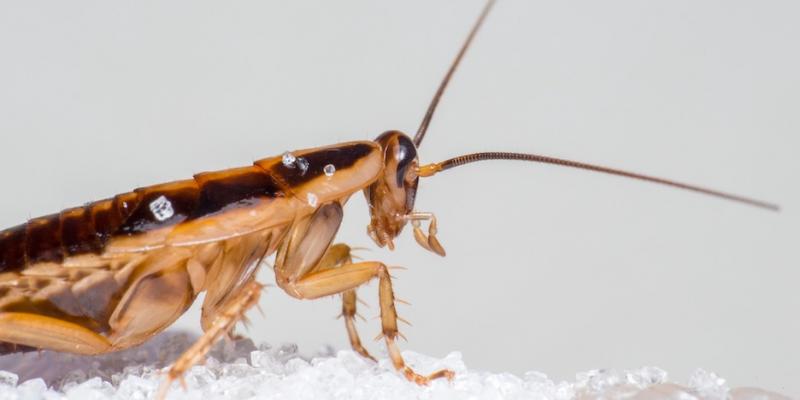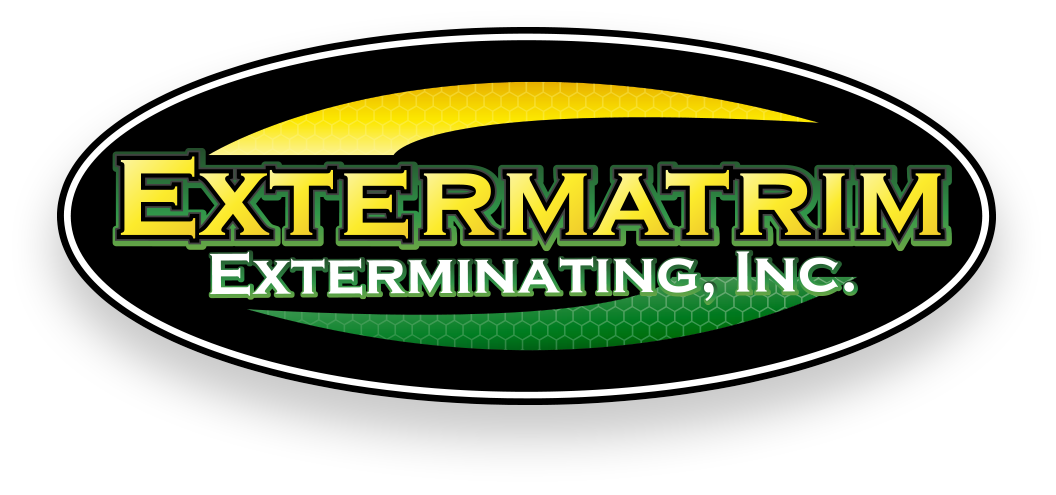A Complete Guide to Cockroaches in Louisiana

Cockroaches are one of the oldest and most adaptable species on the planet. There are thousands of species of cockroaches in the world and they inhabit every continent except Antarctica. Even though cockroaches are associated with dirty, unkempt environments, roaches can find their way into anyone’s home if you aren’t careful.
Types of Cockroaches in Louisiana
Of the thousands of cockroach species in the world, only 40 come into regular contact with humans. In Louisiana, there are five types of cockroaches that are considered household pests:
German Cockroaches:
The German Cockroach can be found everywhere in North America. They only come out at night to search for food and water and will scurry away from light. This cockroach is known for its appetite for meats, starches, sugars, and fatty foods. German cockroaches are typically found in kitchens hiding behind appliances and under sinks.
American Cockroaches:
At 1.7 inches long, the American cockroach is the largest cockroach found in the United States. Even though they have wings, these roaches can only fly for short distances. American cockroaches don’t fly very often, but they can move very fast. They can hold their breath for long periods and enter homes through sewer pipes, air ducts, and other places they can squeeze through. American Cockroaches are often found in basements, crawl spaces, or around moisture. They feed on trash, old skin flakes, hair, dead animals, starches, leather, and even each other.
Brown-banded Cockroaches:
These cockroaches are easy to spot because of the two light brown bands across their wings and abdomen. They don’t depend on moisture as much as other cockroaches, so this means that they can live in places in your house that other cockroaches wouldn’t.
Oriental Cockroaches:
Also known as waterbugs, the oriental cockroach is considered to be the dirtiest cockroach in Louisiana. They are usually found in sewers, drains, or other damp and dark locations. They feed on human food, decaying plants, and organic matter. Along with being dirty, these roaches create a strong smell and can transfer bacteria and viruses such as Salmonella, E. Coli, and dysentery.
Surinam Cockroach:
Also known as the Greenhouse Cockroach, the Surinam Cockroach is dark brown with a black body and a black shiny head. This species feeds on plants and plant litter which is why they are often found in greenhouses. They can enter your home by hitching rides on potted plants or other vegetation. Surinam cockroaches are also known to carry parasitic roundworms.
How do Cockroaches Enter Your Home?
Cockroaches are very clever at finding ways into our homes as infestations can happen quickly. There are a number of ways they can enter your home, including:
- Small holes and cracks in the building.
- Hitching a ride on bags, backpacks, furniture, suitcases, and other containers.
- Openings around doors and windows.
- Sewer drains and pipes.
If you live in an apartment building, roaches can travel from one unit to the next through pipes and shared utilities.
What Do Cockroaches Eat?
Cockroaches are not picky when it comes to food. In fact, cockroaches are omnivores, which means they eat both plants and animals. Roaches love to be around human food, so make sure to take the trash out regularly and keep garbage cans tightly sealed. Cockroaches are particularly fond of:
- Fatty foods
- Grease
- Sweets
- Starches
- Meats
Cockroaches will eat anything humans do and more. They will also feast on anything that was made from organic material such as:
- Book bindings
- Cardboard boxes
- Feces
- Fingernails
- Hair
- Leather
- Stamps
- Wallpaper glue
Dangers of Cockroaches in Your House
Roaches can make your skin crawl, but that’s the least of your worries. The CDC warns that cockroaches can carry pathogens that can be transmitted to humans through contaminated food.
- gastroenteritis
- dysentery
- cholera
- typhoid fever
- poliomyelitis
- salmonella
Roaches also produce a chemical that can cause allergic reactions in humans as well as exacerbate asthma and through their saliva, droppings, and discarded exo-skeletons.
How to Get Rid of Cockroaches
When you have a cockroach infestation it becomes a health hazard for you and your family. Without professional help, clearing up an infestation is going to be tough. However, there are some methods you should take to prevent cockroaches and make your home inhospitable to these disgusting pests.
Seal Off All Entry Points
The first thing you should do is inspect the exterior of your home for any cracks in the foundation, loose boards, torn screens, or any other place roaches might be able to squeeze through. Use caulk to seal up any cracks or gaps around windows and doors and make sure your weather stripping is in good shape.
Remove Food & Water Sources
Cockroaches will settle into your home if there is easy access to food and water. By removing access to these items, you will force the cockroaches to go elsewhere. A good tip is to use this method in conjunction with glue traps. With no other food available, cockroaches will have no other choice but to head for the traps. To starve out roaches you should:
- Put food in air-tight containers.
- Put away pet food.
- Keep your kitchen clean.
- Fix leaky pipes.
Keep Your Home Clean
While cockroaches can infest clean homes, they are much more likely to invade homes that are messy and cluttered. Dirty kitchens and bathrooms can become cockroach breeding zones if you don’t properly clean up after yourself. Here are some of the best practices to ensure that all the areas in the house are squeaky clean:
- Clean grease on the stovetop.
- Clean up spills and messes as soon as they occur.
- Do not leave dirty dishes in the sink.
- Mop the floors regularly.
- Store food in airtight containers.
- Sweep the floor regularly.
Use Glue Traps
Glue traps are a tried and true method for eliminating cockroaches in the home. Glue traps work simply by luring cockroaches to the trap with a smell. Once the cockroach enters the trap the glue prevents them from moving and they eventually starve to death. Place traps in areas where you know cockroach activity is taking place, then act accordingly.
Boric Acid
Boric acid is a naturally-occurring compound that is harmless to humans and pets but is deadly for cockroaches. When roaches walk through boric acid, it sticks to their legs and wings. When they ingest boric acid, it destroys the roache’s nervous and digestive systems.
To use boric acid as a trap, sprinkle some boric acid onto a paper plate. Use peanut butter or an orange peel as bait and place it in the middle of the plate. Set your homemade trap in areas where you have seen cockroach activity.
Professional Pest Control
If you have tried everything and you still can’t rid yourself of a cockroach infestation, the next step is hiring a professional pest control company. Extermatrim offers effective pest control services, providing customized care and working with you to ensure you get rid of roaches permanently. Contact us today to get started!
